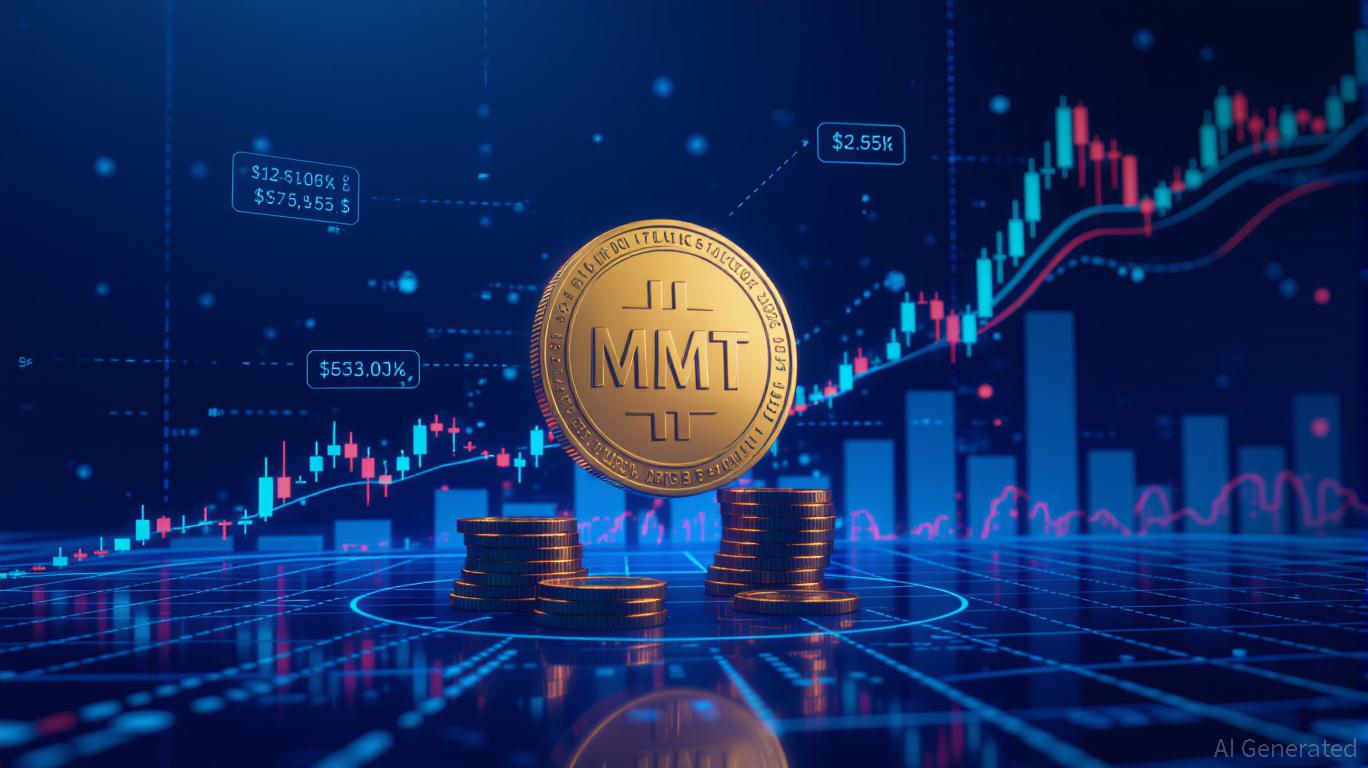Reevaluating MMT After Quantitative Easing: Insights from the Latest Rise in MMT Price Forecasts and Their Implications for Market Outlook
- Post-QE markets show MMT's influence on digital assets, with MMT token surging 1,300% driven by Binance airdrops and institutional buying. - Q2 2025 saw fixed-income markets shift to traditional risk-return metrics as MMT's dominance waned amid normalized term premiums and higher debt compensation demands. - Investors rotated to small-cap/value equities and AI infrastructure amid fiscal stimulus, while elevated valuations emphasized diversification and fundamentals. - MMT remains relevant for sovereign f
MMT’s Shifting Impact on Fiscal Policy and Digital Assets
The fundamental beliefs of MMT—particularly the view that governments with control over their own currency can run deficits without facing default—have sparked debate in both academic and policy arenas for years. Yet, its real-world impact has grown notably in 2025, especially within the digital asset sector.
However, the dominance of MMT appears to be fading as more traditional economic models regain prominence. In the second quarter of 2025, the fixed-income sector
Investor Strategies in the Wake of QE
The third quarter of 2025 provides insight into how investors have adjusted to the post-QE landscape. After the Federal Reserve reduced rates by 25 basis points in September and hinted at two more cuts before year-end, market participants have revised their approaches to reflect a weakening job market and ongoing inflation
Stock markets have experienced a significant shift, with leadership moving from large-cap growth companies to small-cap and value stocks, reflecting a broader hunt for undervalued assets amid increased fiscal stimulus

The
MMT
Token Rally: Hype or Fundamentals?
The Momentum (MMT) token’s dramatic 1,300% increase in 2025 has captured widespread interest, but its price movement seems to be driven more by external factors than by MMT’s theoretical foundation. Bitget’s analysis attributes the surge to Binance airdrops, institutional investments, and broader trends in crypto speculation—demonstrating the speculative tendencies of digital assets in the post-QE era
This gap between theory and real-world outcomes prompts important questions for investors. Can MMT’s concepts serve as a reliable guide for asset allocation in markets increasingly shaped by algorithms, regulatory changes, and economic uncertainty? As of 2025, the answer appears to be mixed: MMT remains a valuable lens for understanding government fiscal policy, but it offers limited accuracy when forecasting the movements of individual tokens or stocks.
Conclusion: Integrating MMT with Traditional Investment Approaches
The post-QE period calls for a well-rounded investment approach—one that recognizes MMT’s impact on economic policy but bases portfolio decisions on established risk management practices. For investors, this means managing the volatility of speculative assets like the MMT token while capitalizing on fiscal momentum in areas such as AI infrastructure and small-cap stocks. For policymakers, it highlights the importance of aligning MMT-inspired fiscal actions with long-term growth goals, ensuring that expansive measures do not unintentionally create asset bubbles or drive up inflation.
As financial markets continue to change, the relationship between MMT and investor behavior will remain a critical topic. The latest surge in MMT price forecasts is not just a sign of theoretical enthusiasm, but also an indicator of how investors are navigating the complexities of the post-QE environment.
Disclaimer: The content of this article solely reflects the author's opinion and does not represent the platform in any capacity. This article is not intended to serve as a reference for making investment decisions.
You may also like
Ethereum News Today: Ethereum's 60 Million Gas Spike: Major Milestone or Foreshadowing $80,000?
- Ethereum’s gas limit hits 60M, supported by 513K+ validators, boosting scalability ahead of Fusaka. - Vitalik Buterin highlights targeted gas cost hikes for inefficient operations to incentivize smart contract optimization. - zkSync’s Airbender innovation enables faster proof generation, paving the way for future gas limit expansions. - Fusaka upgrade (2025) aims to solidify Ethereum’s economic model, with long-term gas targets up to 150M via EIPs. - Despite $2,859 price, analysts project $80K potential

Australia Connects Conventional and Digital Finance Through Groundbreaking Cryptocurrency Regulations
- Australia introduces 2025 Digital Assets Framework Bill, requiring crypto exchanges and custodians to obtain AFSL and operate under ASIC oversight. - The legislation creates two license types: "digital asset platform" for crypto trading and "tokenized custody platform" for real-world asset tokens, with tailored compliance standards. - Small operators with <$5,000 per customer and <$10M annual volume get lighter requirements, aiming to balance innovation with consumer protection. - Projected to unlock $24

Security Systems Technology and ICP Network Expansion: A Cybersecurity-Focused Path Forward for Decentralized Infrastructure
- ICP's decentralized identity and encryption address cybersecurity gaps, enabling secure financial behavior through blockchain innovations. - Cross-chain interoperability with Bitcoin/Ethereum via Chain Fusion drives DeFi growth, unlocking $B+ liquidity through trustless swaps. - Institutional adoption and 30% 2025 price growth reflect ICP's appeal, bolstered by Azure/Google partnerships and 1.2M active wallets. - Regulatory scrutiny and 11% price volatility highlight risks, though technical resilience an

Why ZEC Is Soaring in Late 2025 and Its Implications for Cryptocurrency Investors
- Zcash (ZEC) surged to $9.24B market cap in late 2025 driven by 1,300% transaction volume spikes and 30% shielded pool adoption. - Institutional investors like Cypherpunk and Reliance allocated significant ZEC holdings, signaling privacy assets' growing institutional acceptance. - Zcash's hybrid privacy model - optional shielded transactions with blockchain compatibility - outperformed Monero as privacy demand rose amid data monetization trends. - Ecosystem expansion through OKX relisting and Solana integ
